

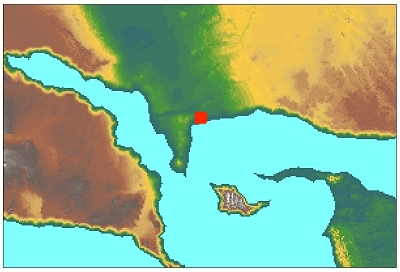
|
"There is no way to grasp the nothingness of space. Earth can just be imagined, but holding its image next to a Jovian forces you to realise that our planet of origin is small; indeed, it is as nothing; it is nothing. That stupendous Jovian in turn is a speck compared to the magnificence of Sol or Jua. And yet these fine stars are negligible next to a red giant. And you ask me to describe the size of nothing in between the stars, to catch it in words? I cannot, and neither can you. You CAN NOT... During the voyage, waiting for time and space to come together again, I felt the nothingness, and depressed me more than it impressed me. Why were we amid nothing? Wha madness was this? To those who also were out there in the nothing I have no trouble admitting I was afraid. To others I say: go and look into the heart of nothing, and come back and speak to me; who answers back? Who still stands tall? From 'Worlds Apart: Natural Histories of Furaha and Earth', by Souren Nyoroge. These remarks make it clear that Mr. Nyoroge suffered severely from 'spacer blues'. |
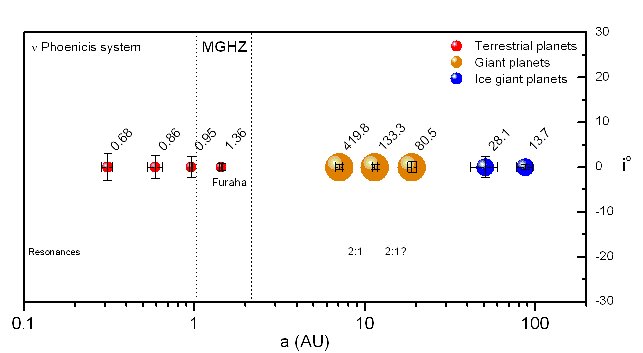
|
This image provides some quantitative data on the Nu Phoenicis system. Measurements are described in Earth units, so the distances from Jua, the star, are given in 'astronomical units (AU)' (one AU is the distance from the sun to Earth). Furaha, the fourth planet, is a bit more than 1 AU away from the star. It is located in the 'maximum greenhouse habitable zone (MGHZ)', meaning that its orbit is the right distance to enable circumstances friendly to life as we love it. The numbers shown above each planet indicate its mass, also compared to that of Earth. Furaha is a bit heavier than Earth, which causes gravity at the surface to be 1.15 times that of Earth. |
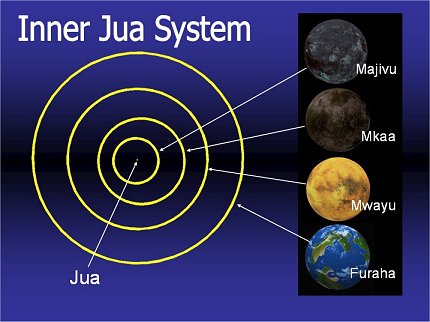
|
This is the inner system with the orbits to scale. The star 'Nu Phoenicis' was given the shorthand name 'Jua' by the system's explorers, who happened to be Swahili-speakers. The Event Horizonists later eagerly adopted these names, perhaps based on an exaggerated sense of propriety; after all, the word 'Jua' simply means 'star'. Either the Horizonists did not care, or did not bother to look the word up. Anyway, the four 'rocks' (terrestrials) that form the inner system are shown as well, but not to scale. From the inner to the outer system they are Majivu, Mkaa, Mwayu and Furaha. |
|
The following quote from Capitaen Han Lebrouillard's book 'Going out' tells in spacer's jargon what it is like to explore space: "When you've been in a safe system for some time you get the urge to explore again. It's no easy decision: distant sensing can show you there are bodies in a hab, but not whether they're good or bad. Most likely they're just bad: joves, cinders or cubes. You can always do some roid mining, but you never know, so in the end, you say goodbyes and drift far enough out of the well to release the time moorings and fire the Feng. And then you wait... When the Boing says you've moored again, then, and only then, do you find out if the wait was worthwhile" As told by an old hand, planet scouring sounds easy, but it is not. Even old hands welcome the traditional 'Boing' announcing that the moorings have successfully rehooked time. The best reason to be happy is that you do not know beforehand how long the trip will take, and you will not find out until it is over. The spacer's nightmare is the tiny chance that this trip is the legendary eternal one, and your ship will be another 'Spacing Dutchman' with ghosts in oit, forever beyond time and space. After six months spaceside that will get to you. 'Waiting for the Boing' sums up the slow horror of space travel. |
The crew of the Imperial Swahili Realm vessel Ngonjera had chosen a happy-go-lucky approach to scouring. 'Boing!' said the ship on entering local space near the star Nu Phoenicis, so the crew ran to get a look at the first data. The first packets to percolate back showed two joves, not surprisngly, as joves are the easiest to find. The first terrestrial they found was the innermost one. As it was a cinder they called it 'ashes' (Majivu). Then more joves came up, and two more cinders, but then a new rock was found. Sensing free oxygen they knew they had a cinderella on their hands. That's what spacers call a potential Gaean: it's either a maid or a princess. Not long afterwards, the telescopes made out white clouds, shiny seas, and brown, yellow and above all green continents. They'd found the spacer's dream: their cinderella was a Gaean. |
|
Here is one of the cinders they encountered, Mwayu. It is kind of attractive in its own right, but you would not want to live there. It might possibly be terraformed, and the Fogg Corporation expressed an interest to do just that for a while, but so far their plans have not come to fruition. |
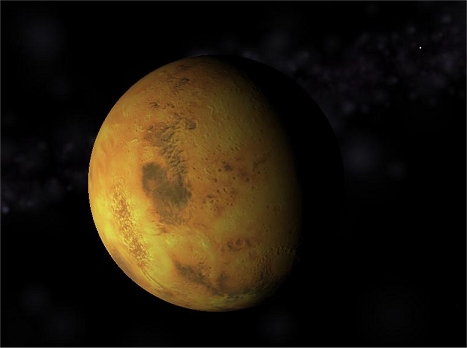
|

|
In a view of the outer system the inner system is not even visible, which is fairly typical of solar systems. The five gasballs are shown, but not to scale. They're Jitu, Ubaridi, Sititiko, Makamasi and Peke ('isolation'). |
|
Here the planets have been placed next to one another. The upper picture shows the four inner planets. Furaha, a bit larger than Earth, is clearly the largest of the inner four. The next image literally puts them in perspective: the inner planets can still be recognised, but in comparison to the outer ones they are tiny. No wonder 'Jitu' received the name 'giant'. In turn, no planet looks the least bit impressive when juxtaposed to the sun: Jua, the star, dwarfs even Jitu. The inner planets including Furaha are only one or two pixels across in this image. |
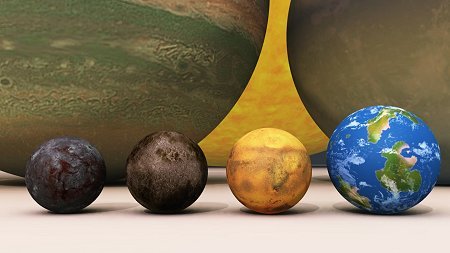

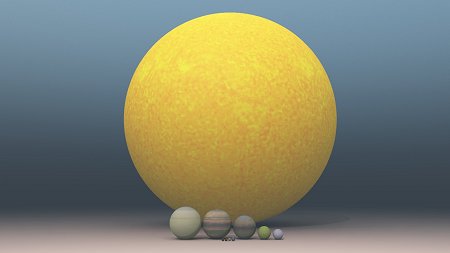
|